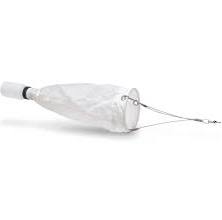 What are the most important animals in the ocean? Whales? Sharks? Giant squids? Think smaller. Arguably, the most important animals in the ocean are found at the bottom of the food chain—the tiny creatures called plankton.
What are the most important animals in the ocean? Whales? Sharks? Giant squids? Think smaller. Arguably, the most important animals in the ocean are found at the bottom of the food chain—the tiny creatures called plankton.
Plankton are microscopic animals that are found all over the world in large bodies of water. They have many different shapes and sizes because they’re not grouped together by how they look, but by their place in the food chain (the bottom). Becoming a planktologist—a scientist who studies plankton—is simple; all you need is a special net.
The plankton nets found in stores are very expensive, often more than $50! Luckily, though, they can be easily made from household items for less than $10.
This is a bonus experiment (the supplies for this project aren’t in the main shopping list), so you’ll find the the supply list of materials you’ll need (below).
Please login or register to read the rest of this content.

